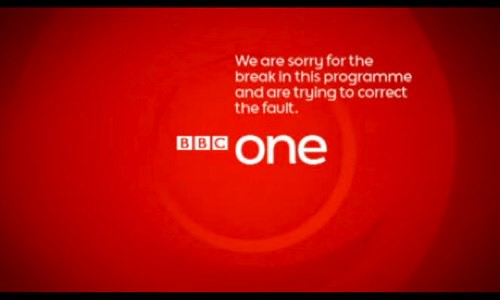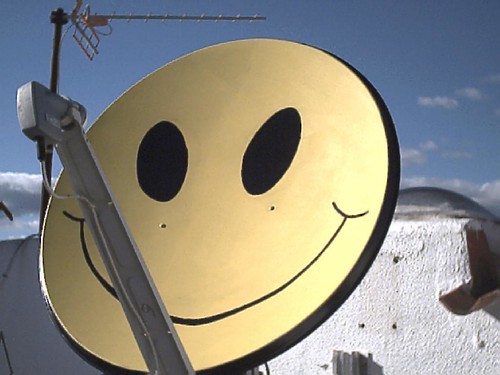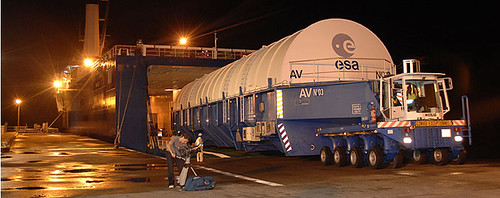
Are you kidding me? During a LIVE broadcast, ESPN’s feed from Switzerland goes dark? That’s right, rocket scientists, they lost the signal during the Euro 2008 semi-final match between Turkey and Germany. I missed one of the goals! And it wasn’t only ESPN that lost the feed — everybody lost it. Germans, Turks — all the live broadcasts were depending on that pool feed from Basel, Switzerland (live webcam image above).
Why? Has the world gone mad? Where’s my Swiss dependability? Perhaps I shouldn’t trust those aerial trams and cable cars at ski resorts like I used to, owing to "Swiss dependability." Well, it’s got nothing to do with "the Swiss." This was all UEFA: they decided to handle all the technical stuff themselves by forming UEFA Media Technologies SA, who was in charge of the International Broadcast Centre in Vienna, Austria. The operation is run by Alexandre Fourtoy, who used to run their Web site, uefa.com.
Apparently lightning struck the power source and knocked out the feed several times, via Canadian Press:
A violent thunderstorm swept across Austria and knocked out power at the International Broadcast Center in Vienna, from where television images of the match were beamed around the world.
With the match delicately poised at 1-1 in the second half at St. Jakob Park in the Swiss city of Basel, screens around the world flickered and went blank. Internet coverage also was hit by the blackout.
"Tonight the television signal in the International Broadcast Centre for the Germany-Turkey game has been interrupted several times in the second half due to technical reasons which are currently being investigated, in particular to evaluate the impact of the violent electrical storm over Vienna at that time," UEFA said in a statement.
As the thunderstorm raged over Vienna, the images came and went several times in the closing minutes.
In between the blackouts, Miroslav Klose gave Germany a 2-1 lead in the 79th minute off a cross from Philipp Lahm. But screens were blank when Semih Senturk pulled off what looked like another Turkey escape act with an 86th-minute equalizer, beating goalkeeper Jens Lehmann at the near post.
Images returned in time for viewers to watch Lahm eliminate Turkey with a goal in the last minute of regulation time.
The only broadcasters whose signal escaped the interruption were Swiss public TV company SRG in Zurich and Al-Jazeera, said UEFA, which couldn’t immediately explain why those feeds were unaffected by the Vienna broadcast centre blackout.
However, SRG spokesman Daniel Steiner, said the broadcaster has access to an official feed in all Swiss stadiums, and they were able to tap into that when the connection went down. The Swiss broadcaster provided the feed to German TV station ZDF for 15 minutes, during which time the two goals were scored.
The heavy rain, high winds and lightning also sparked the evacuation of a fan zone in downtown Vienna and two people were injured after being trampled in the rush to leave the area, police said.
Authorities said they gave the order to close the fan zone at 10:15 p.m. local time after the storm unleashed winds exceeding 100 kilometers per hour.
While the disruptive storm hit Vienna, spectators watching the game at the ground in Basel remained dry and unperturbed throughout.
Look, this isn’t some minor league game from Ukraine — this is the European Championships, aruguably the second most important soccer (football) tournament after the World Cup. You’re providing the satellite feed for hundreds of television networks. Where’s your redundancy?
When Fox does an NFL game from the Los Angeles, for example, they buy three fiber and two satellite paths, and probably a couple of power generators (properly grounded) standing by. Nobody wants to break the news to Rupert they saved some money by not having an extra back-up on Monday.
So they switched to a feed showing the "fanzone" in the Muensterplatz. Actually, the match ended while we were watching that feed. I’m sure I was not the only one outraged by this. Al-Jazeera’s feed was not affected? Dude…

We’ll follow up on this one later.
The Guardian’s live text coverage captured the moment well:
GOAL! Germany 2-1 Turkey (Klose 78): Goal! And I didn’t see it! Rustu comes for a cross, makes a right pig’s ear of it, and Klose heads home. So I’m told.

















